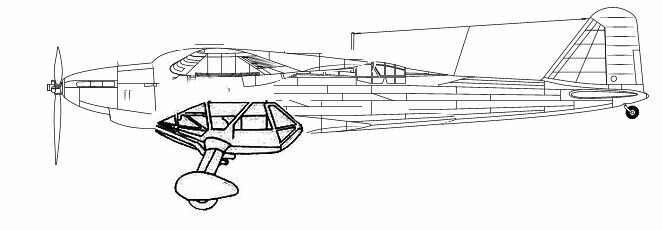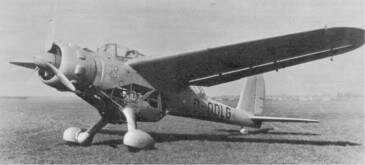pathology_doc
ACCESS: Top Secret
- Joined
- 6 June 2008
- Messages
- 1,561
- Reaction score
- 1,415
I've caught papacavy's "What If" disease, but this is purely for interest rather than literary purposes.
As we all know, the Fairey Battle was an airplane which, once tested in combat, did not imbue its crews with any confidence that they would come home from attacking defended targets. Let's change things, and equip all Battle squadrons wholesale with Blackburn Skuas instead, with conversion training managed by RN units that already operate the beast, or maybe even have some FAA squadrons operating from land bases in support of the RAF, in the way that the RNAS operated Sopwith Triplanes alongside the RFC in World War 1.
What changes?
For one, we now have an RAF dive bomber, with potential benefits for accuracy and target effect (what was the largest bomb the Battle could carry?), and one which we know from history to be at least competent or it wouldn't have sunk the Konigsberg. Furthermore, the forward-firing armament is much stronger than the Battle's. Flown by aggressive pilots, with a far more substantial gun armament that might be used for ground strafing/flak suppression or taking pot-shots at any enemy fighter careless enough to overshoot or to concentrate too hard on another victim, how might the culture of the RAF's light bomber squadrons have (been) changed?
Barrett Tillman's book on the Dauntless dive-bomber describes numerous air combats that ended successfully for the SBD (either in an outright kill or with the enemy fighter driven off), and the key there seems to be a smoothly-working team with a keen interest in not just surviving but actively killing enemy aircraft once engaged. Yes, the SBD did have the advantage that it had more than a token forward gun armament in later variants - two Browning fifties vs. the four .303s of the Skua, and with two .30 vs one .303 in the rear quarter, and with the Japanese aircraft being more lightly built than German ones - but four .303 is still nothing to sneeze at if your shooting is good enough and I still don't think I'm asking the impossible here.
Who can fill me in on the Skua? I get the drift that the culture was primarily "bomber crew with a minor in dogfighting", but switch that around or give them a "double major" and I think you could end up with something very different - and potentially superior.
(MODS: I'd considered putting this in the Bar, but it's here because it's a debate of a service's whole culture changing rather than a simple one-for-one type replacement and thus justifies the alternative-history "tag".)
(Edited to improve readability. The text was not otherwise changed.)
As we all know, the Fairey Battle was an airplane which, once tested in combat, did not imbue its crews with any confidence that they would come home from attacking defended targets. Let's change things, and equip all Battle squadrons wholesale with Blackburn Skuas instead, with conversion training managed by RN units that already operate the beast, or maybe even have some FAA squadrons operating from land bases in support of the RAF, in the way that the RNAS operated Sopwith Triplanes alongside the RFC in World War 1.
What changes?
For one, we now have an RAF dive bomber, with potential benefits for accuracy and target effect (what was the largest bomb the Battle could carry?), and one which we know from history to be at least competent or it wouldn't have sunk the Konigsberg. Furthermore, the forward-firing armament is much stronger than the Battle's. Flown by aggressive pilots, with a far more substantial gun armament that might be used for ground strafing/flak suppression or taking pot-shots at any enemy fighter careless enough to overshoot or to concentrate too hard on another victim, how might the culture of the RAF's light bomber squadrons have (been) changed?
Barrett Tillman's book on the Dauntless dive-bomber describes numerous air combats that ended successfully for the SBD (either in an outright kill or with the enemy fighter driven off), and the key there seems to be a smoothly-working team with a keen interest in not just surviving but actively killing enemy aircraft once engaged. Yes, the SBD did have the advantage that it had more than a token forward gun armament in later variants - two Browning fifties vs. the four .303s of the Skua, and with two .30 vs one .303 in the rear quarter, and with the Japanese aircraft being more lightly built than German ones - but four .303 is still nothing to sneeze at if your shooting is good enough and I still don't think I'm asking the impossible here.
Who can fill me in on the Skua? I get the drift that the culture was primarily "bomber crew with a minor in dogfighting", but switch that around or give them a "double major" and I think you could end up with something very different - and potentially superior.
(MODS: I'd considered putting this in the Bar, but it's here because it's a debate of a service's whole culture changing rather than a simple one-for-one type replacement and thus justifies the alternative-history "tag".)
(Edited to improve readability. The text was not otherwise changed.)
Last edited:







